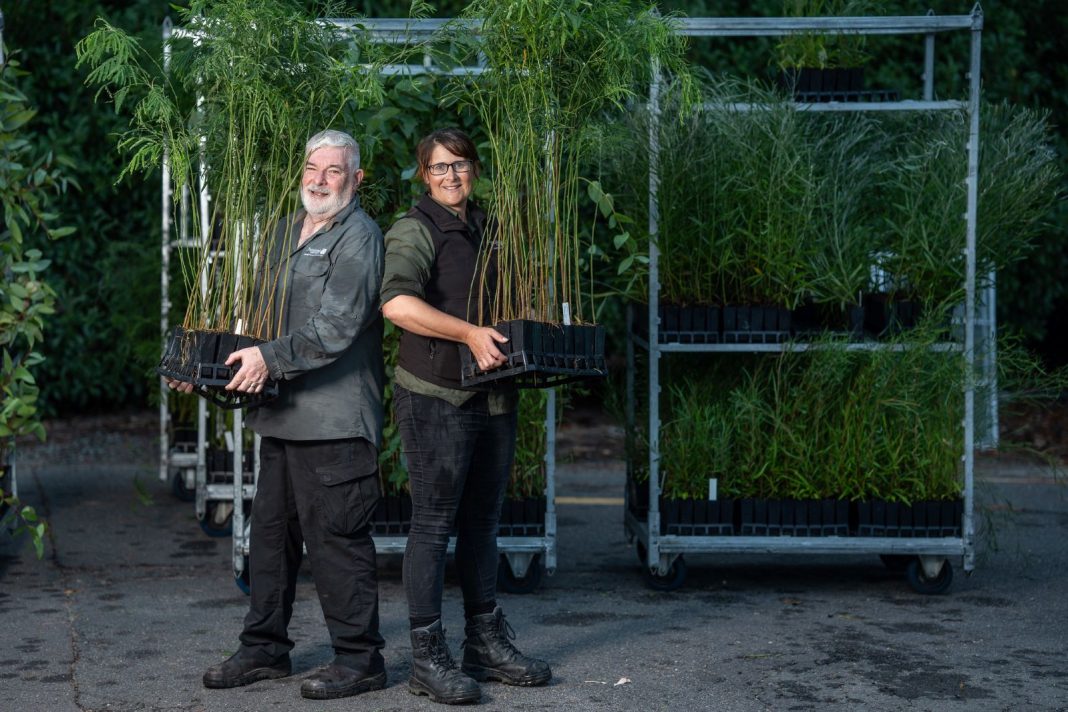The bush capital is living up to its name, with Yarralumla Nursery venturing beyond its official ACT Government role of growing trees for landscape projects, instead growing trees for koalas.
Normally (since 1914), Yarralumla Nursery’s core business is propagating plants for planned and pruned government landscaping but this is wild – 21,000 seedlings for 40 hectares of koala habitat in the snowy country near Cooma, NSW.
Not just any old gum tree either, but 10 different native species because koalas (Phascolarctos cinereus for the academics) are very picky and only choose a dozen trees for its home range, favouring just one tree in particular.
So why is Yarralumla Nursery growing koala-friendly plants instead of suburb-friendly tubestock? Because there are only 100,000 to 500,000 koalas in the wild, due partly to urban clearing and habitat loss.
General manager of Yarralumla Nursery, Dr Matt Parker, has been working closely with the NSW Parks and Wildlife Service to help save this beloved marsupial (not a bear).
“Restoring koala habitat is something important to a lot of Australians so it was a positive project for the team to really get behind,” Dr Parker said. “It’s part of a larger project by NSW Parks to rehabilitate 40 hectares of koala habitat near Numeralla over the next five years. One of their goals is to double the number of koalas in NSW by 2050.”
Koalas are very selective in their tastes (decor and diet), so Yarralumla Nursery has grown a mix of eucalyptus, acacias, grevilleas and leptospermum, which are endemic to the snowy region.
If you thought children were fussy eaters, out of the 600 species of eucalyptus trees in Australia, koalas only eat 40–50 of these. Their sensitive (and cute) noses can detect the type of eucalypt they prefer just by sniffing the base of a tree.
They’re bound to enjoy the all-you-can-eat Sizzler buffet (about 500g-to 1kg a day) that Yarralumla Nursery has grown. Mind you, fussy koalas only eat the freshest, juiciest tips of eucalyptus leaves.
The nursery used locally-source seed and saw good germination rates. The latest tree-planting season near Numeralla was in March/April this year.
“Some of those species are for under-planting, it was a mix of trees and ground cover and shrubs,” Dr Parker said. “Smaller shrubs that are two to three metres as opposed to the eucalypt varieties that grow upwards of 15 to 20 metres.”
Canberra should feel chuffed to be chosen by NSW Parks and Wildlife Service to be part of the project. There are not many nurseries around with the capacity to handle such a massive project.
It’s a walk in the park for Yarralumla Nursery, which has grown more than 50 million plants in its 100 year history. Currently, 400,000 plants are produced each year.



